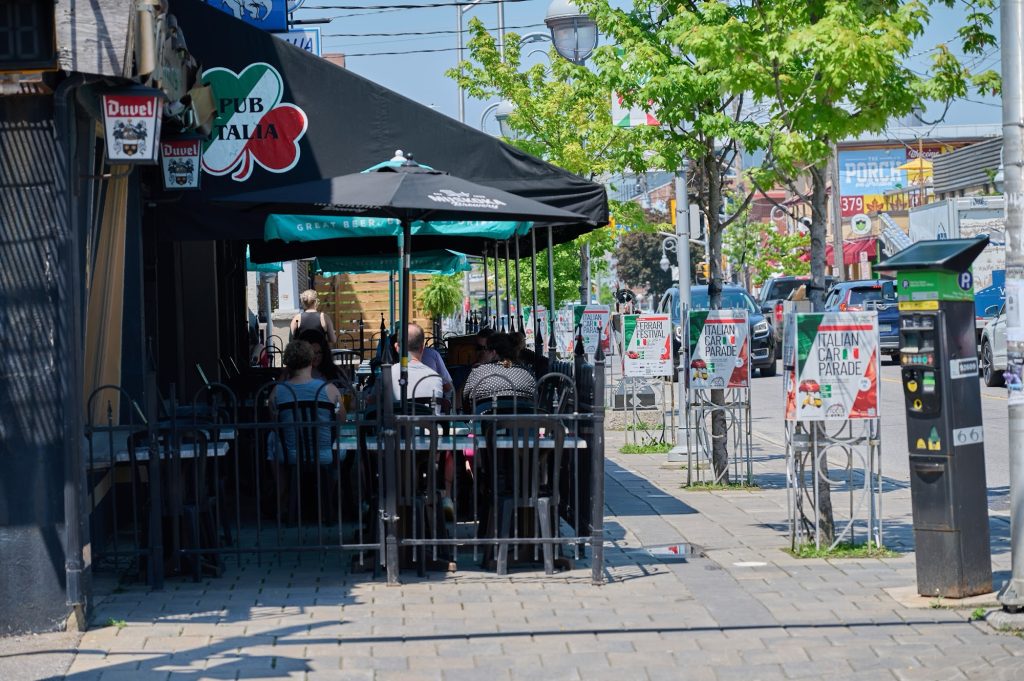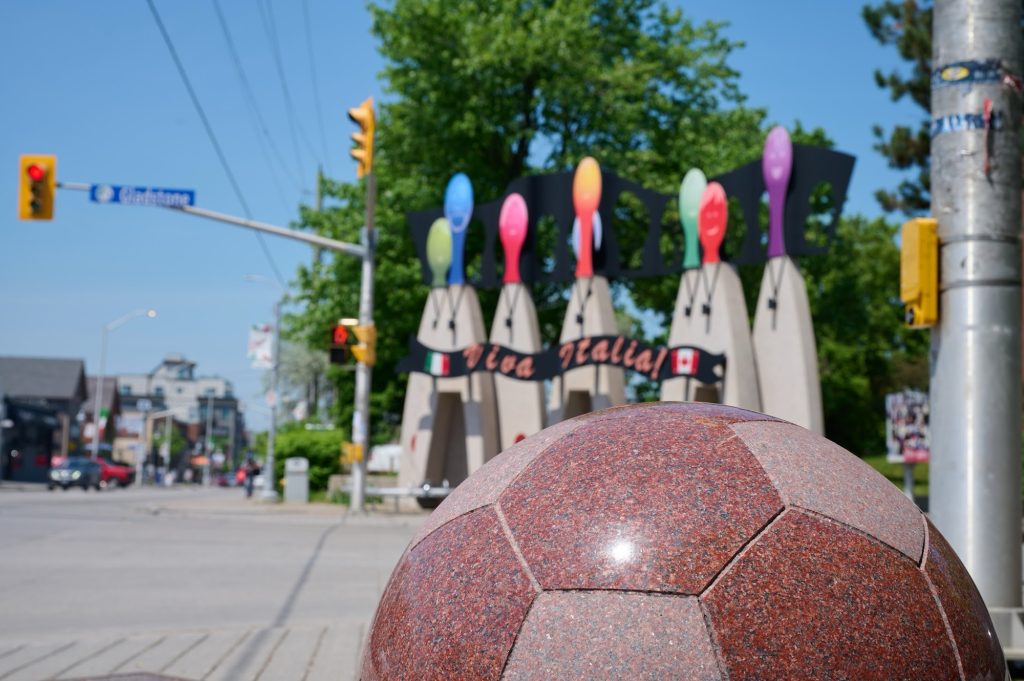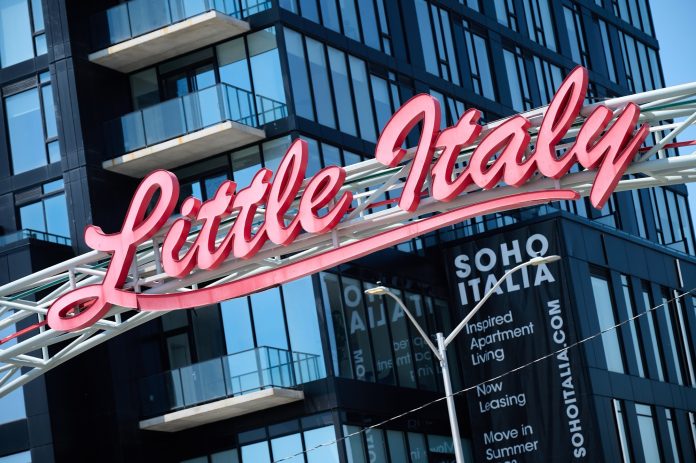When Joe Cotroneo was a child, streetcars still ran down Preston Street.
The owner of Pub Italia, which has been a staple in Little Italy for 31 years, recalled the neighbourhood being a walkable community where residents knew each other and socialized. The dynamics started to change in the 1960s when many homes were expropriated to make way for the Queensway.
“Everyone was a blue collar worker. All the Irish kids lived six blocks away and went to St. Patrick’s School,” recalled Cotroneo. “I remember outdoor skating and broomball at Plouffe Park. There was a big IGA grocery store where you could do all your shopping needs. They talk about 15-minute neighbourhoods. We had that 60 to 70 years ago.”
A lot has changed in the decades since. Today, Preston Street is home to many Italian-opened businesses, but has also welcomed flavours from other parts of the world. Very few Italians actually still reside in the community, settling instead in Parkwood Hills, Heron Park and South Keys.
Trina Costantini-Powell’s roots to Ottawa’s Little Italy date back to the early 1900s when her grandfather, Giuseppe Costantinti, moved to Rochester and Preston Streets from Italy in his early 20s. He first worked as a labourer, then was one of the founders of The Prescott Hotel, securing its liquor license in 1934.
“In 1940, my grandfather went into the internment camp during the Second World War because they thought he, like many Italians, had fascist leanings,” she said. “He had to turn all his business dealings over to a lawyer who totally screwed him over when he got out a year later.”

Costantini-Powell is proud of her Italian heritage. She’s taken part in St. Anthony’s Church functions all of her life, was president of a women’s auxiliary group for 12 years, and has been involved with various Italian community associations. But she said the main streets dynamics are changing as the older generations pass on and new ones take over.
“The community right now is probably within its fourth or fifth generation. There really aren’t a lot of Italian restaurants when you think about it. And those that are there have been there for years. Does it need a few more to give it more of a flavour? I think it does,” said Costantini-Powell. “I could go to a Korean restaurant on Elgin Street, so why would I go to one in Little Italy?”
When she traveled to other Italian districts, like the one in San Diego, she was inspired by its display of flags that featured the likes of well-known American Italians. Costantini-Powell said she’d like to see something similar done on Preston with photos of old businesses.
Preston’s Italian culture has lived on thanks to social groups that formed after waves of immigrants came to Ottawa following the first and second World Wars, born as a way to retain language dialects and traditions.
“They’d have their own functions and parties, sometimes honouring a saint from their village. It gave them comfort to be amongst their friends who were also immigrants,” said Costantini-Powell. “Now you see those people are in their mid to late 80s. A lot of them are residents at Villa Marconi (Nursing Home). Their kids or grandkids no longer need these associations because they’ve integrated into Canadian society.”
Evolution of the Italian landscape
While many of the original Italian businesses are long gone, some like the Prescott, La Roma and Pub Italia have shaped Preston for decades. And even though parts of its past are history, the local BIA is doing what it can to remember its rich past.
Lindsay Childerhose, executive director of the Preston Street Business Improvement Association (BIA), said culture is always in full display during the annual Italian week festivities in June. The red, white and green archway at the corner of Carling is a reminder of its roots, and art installations do more than just beautify the area.
“Our heritage murals and the Postcards from the Piazzas sculptures pay tribute to the families who founded and shaped the neighborhood into what it is today,” said Childerhose. “New Italian businesses have also opened, like Retro Gusto and Dolci Sapori.
“We also see a range of fresh and diverse businesses come in, which really boost the vibrancy of the area and complement the existing businesses.”
While the heritage murals were removed for construction of the new Highway 417 overpass, Childerhose said the BIA plans to work with the Ministry of Transportation to ensure they are safely put back up in early 2025 when work is complete.

Preston has also seen the arrival of many highrises, including the Claridge Icon, which is Ottawa’s tallest residential building standing at 45-storeys. The ongoing residential development will bring a boost for business and the local economy, Childerhose added.
“Preston Street is well-known and loved for its charming, European village feel, which comes from the mom-and-pop businesses that line the street,” she said. “Main streets thrive when there’s a strong sense of community and a solid resident base.
“The new developments will enhance this by bringing more people into the neighborhood, supporting our local businesses, and adding to the social fabric of the area.”
A future with more towers on the outskirts is music to Cotroneo’s ears. He said while the dinner rush at Pub Italia has bounced back following the COVID-19 pandemic, lunchtime is still quiet, partially due to the change in public servants in the city, with federal employees only back in the office two to three days a week.
Cotroneo said the next step is to bring a greater mix of retail options to the street.
“In order to be a successful street, you can’t just be known for one thing. Then people come and eat or buy a pair of shoes and leave,” he said. “You need people on the street in the morning — it’s why civil servants need to go back to work. You need people going out at lunchtime. You need people at dinner time going out to the restaurants. And you need a few bars and pubs that stay open late.
“It’s why the ByWard Market is struggling,” he continued. “All the retailers have left. Now they are known as a nightclub scene at night and a lot of people don’t go down there.”
